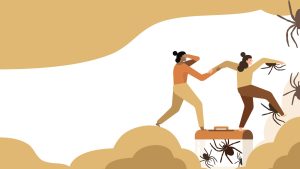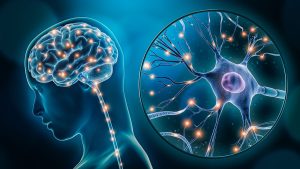Understanding the Phenomenon of Fear: An Introduction
Unraveling the Nature of Fear
Fear, as an emotion, is a primal response to potential danger or harm, making it a fundamental survival mechanism. It triggers the body’s fight or flight response, thereby preparing individuals to face or flee from perceived threats. Although fear can indeed help preserve life in high-risk situations, irrational fears or phobias can be detrimental and debilitating, hindering an individual’s day-to-day functioning. For instance, a person who is acrophobically afraid of heights may avoid vital activities that involve being in high places, such as flying.
Triggers and Impact of Fear
Fear can be triggered by a variety of stimuli, ranging from actual threats, such as being confronted by a predator, to seemingly harmless objects, events, or places that provoke irrational fear, as seen in phobias. The National Institute of Mental Health states that approximately 12.5% of U.S. adults experience specific phobia at some point in their lives. These fears can have debilitating psychological and physiological effects, including panic attacks, rapid heartbeat, shortness of breath, tremors, and intense desire to escape the situation.
Roots of Fear: Genetic or Learned?
Both genetic and environmental factors contribute to the development of fear. The fear reaction resides in the amygdala, a part of the brain responsible for emotional processing. Certain fears may be ingrained as a result of evolutionary survival tactics, such as the fear of snakes, spiders, or heights. However, most phobias are learned fears, often formed in childhood. For example, a child who has been bitten by a dog may develop a lifelong fear of dogs, known as cynophobia.
Phobias: An Amplification of Normal Fear
Phobias are an extension of normal fear, but with an intensity and persistence that significantly disrupts life. According to the American Psychiatric Association, for a fear to be classified as a phobia, the fear must persist for six months or longer, cause intense anxiety or panic attacks, and interfere with normal living. For instance, a person with agoraphobia (fear of places or situations that might cause panic) would go to great lengths to avoid public places, severely limiting their social interactions and possibly even leading to self-imposed housebound isolation.
The Psychology Behind Fear and Phobias
Understanding the Emotion
Fear is a basic, intense, and primitive human emotion that involves a universal biochemical response as well as a high individual emotional response. It is programmed into the nervous system and works like an instinct. From the time we’re infants, we are equipped with the survival instincts necessary to protect ourselves from predators or any adverse situations. According to research by Gallup, approximately 1 in 3 adults in the U.S. have some kind of fear or phobia.
When we confront a perilous situation, our bodies respond by releasing stress hormones like adrenaline and cortisol. This triggers the famous ‘fight-or-flight response,’ which raises our heart rate, blood pressure, and supplies energy to muscles, possibly leading to panic or anxiety attacks.
The Development and Impact of Phobias
While fear can be a momentary experience triggered by a specific event, phobias are irrational fears that persist regardless of the situation or context. Phobias typically manifest during childhood, adolescence, or early adulthood and may arise from a blend of genetic tendencies, brain chemistry, and traumatic events. Mayo Clinic reports that around 19 million adults in the U.S have phobias, hampering their daily life to a considerable extent.
Phobias are categorized as an anxiety disorder, encompassing simple phobias (fear of specific objects or situations), social phobia (fear of being intensely scrutinized by others), and agoraphobia (fear of places that might cause panic, helplessness, or embarrassment). They can trigger an overwhelming sense of dread or terror and lead to avoidance behavior, further constricting a person’s life.
Psychological Perspectives on Fear and Phobias
Different psychological theories provide diverse insights into understanding fear and phobias. The psychodynamic theory posits that phobias originate from repressed fear or anxiety, usually stemming from early childhood experiences. For instance, a person might develop aquaphobia (fear of water) after near-drowning during childhood.
Conversely, cognitive theories perceive phobias as a result of flawed cognitive processes or biased information processing, causing irrational fear responses. For example, a person terrified of spiders (arachnophobia) may overgeneralize their fear, wrongly assuming that all spiders are deadly. Behavioural theories, on the other hand, suggest that phobias are learned responses, reinforced over time. The famous case study of ‘Little Albert’ illustrates how fear can be conditioned, leading to phobia.
Identifying the Types of Phobias
Differentiating Simple Phobias and Complex Phobias
Psychologists typically categorize phobias into simple and complex types. Simple phobias, also known as specific phobias, are fears related to particular objects or situations. Common examples include fear of spiders (arachnophobia), snakes (ophidiophobia), heights (acrophobia), and confined spaces (claustrophobia). Research data suggests that around 9.1% of American adults experience specific phobias, making it a common type of anxiety disorder.
Spotlight on Simple Phobias
Simple phobias often begin in childhood and tend to resolve on their own in teenage years or early adulthood. For example, a child with cynophobia (fear of dogs) might have had a traumatic experience with a dog at a young age. Their fear response could involve crying, trembling, or an urgent need to escape whenever they see a dog. Simple phobias can be effectively treated with exposure therapy, a form of cognitive behavioral therapy that involves gradual and repeated exposure to the fear-inducing object or situation.
Understanding Complex Phobias
Complex phobias are more deeply ingrained and often have a broader impact on a person’s life. The most common complex phobias are agoraphobia and social phobia. Agoraphobia is a fear of being in situations or places that might cause panic and make escape difficult. Some people with agoraphobia fear being alone, being in crowded places, or traveling in a vehicle. Social phobia, or social anxiety disorder, involves an intense fear of social situations, often driven by worries about embarrassment or judgement.
Complex phobias tend to begin in late adolescence or early adulthood and are often linked to deep-seated fears or experiences. For instance, a case study published in the Journal of Clinical Psychology revealed that a woman with severe agoraphobia associated going out alone with a traumatic childhood experience of being lost in a crowded market. Cognitive behavioral therapy, medication, and mindfulness techniques are often employed to combat these deeper-seated anxieties.
The Science of Fear
Understanding the Fear Circuitry in Our Brain
Fear is an inherent human response initiated by our brain to help us respond to perceived threats or dangers. The science behind this complex emotional response involves several parts of the brain, specifically the amygdala and the hippocampus. The amygdala plays a central role in generating fear responses, as it processes and interprets the emotional content of sensory signals it receives. In a potentially threatening situation, the amygdala triggers various physiological responses including the release of adrenaline, an increase in heart rate, and widening of pupils. The hippocampus, on the other hand, works with the amygdala to create memories of these fearful encounters, helping us to avoid such threats in the future.
Understanding How Fear Becomes a Phobia
While fear can be considered as a natural and short-term response to a perceived threat or danger, phobias are an entirely different aspect of fear. Phobias are classified as a type of anxiety disorder that involves an excessive and irrational fear of a specific situation, object, or animal. According to a study by National Institute of Mental Health, about 9.1% adults in the U.S. experience specific phobias in any given year.
When our brain encounters what it perceives as a threat, it activates our instinctive “fight or flight” response, producing physical sensations like perspiration or rapid heartbeat. These sensations can be so intense in people with phobias that they may go to great lengths to avoid the situations or objects they fear. For instance, people with arachnophobia (fear of spiders) may refuse to enter a room until assured it’s spider-free.
How Traumatic Experiences Influence Fear Response
Traumatic experiences can often lead to an enlarged and more active amygdala, causing an individual to experience magnified fear responses. Post-Traumatic Stress Disorder (PTSD) is a classic example of a fear-related condition intensely influenced by traumatic events. The person with PTSD may experience flashbacks, nightmares, or intrusive thoughts about the traumatic event, long after it has passed. Their brain may generate extreme fear responses even in situations that are subtly similar to the original trauma. According to the National Center for PTSD, about 7-8 out of every 100 people will experience PTSD at some point in their lives.
How Cognitive-Behavioral Therapy (CBT) Works to Disrupt Fear Responses
The core principle of CBT is that our thoughts greatly influence our emotional and behavioral responses. Therefore, by changing our thoughts (cognitive aspect), we can alter our emotional and behavioral responses. For example, a person with a fear of dogs may constantly have thoughts like “All dogs are dangerous”. In CBT, the therapist would guide the person to question and change these irrational and overgeneralized thoughts, leading to a decrease in fear response. Recent research indicates that CBT is the most effective psychological treatment for reducing anxiety and fear in individuals with specific phobias, with about 60% to 80% of patients experiencing significant benefits.
The Role of Genetics and Environment in Developing Phobias
Genetics: Predisposition to Phobias
Research suggests that a susceptibility to phobias may run in families, pointing to a genetic predisposition. Studies on twins have especially helped illuminate this aspect. A study by Torgersen (1979) revealed that if one identical twin had agoraphobia, the other twin had a 48% chance of also having the same phobia, compared to a mere 5% in fraternal twins. Similarly, Kendler KS et al (1992) study on over 2000 female twins showed a significant genetic component in specific phobias. A more recent study (2007) from the Journal of Anxiety Disorders found a moderate genetic influence in the development of social phobia.
It, however, does not mean that genetics inevitably dooms one to phobias. Genetics may make someone more receptive to developing a phobia, but it doesn’t automatically lead to the condition. Other factors come into play, most importantly—environment.
Environment: Triggering and Propagating Phobias
Environmental factors play a significant role in triggering and perpetuating phobias. As suggested by the diathesis-stress model, an underlying predisposition (diathesis) combined with stressful life experiences can lead to phobias. For instance, someone with a family history of specific phobias is more likely to develop those if exposed to similar stressors or traumatic events.
Specific instances can be traumatic experiences like a gruesome spider bite giving rise to arachnophobia or a disastrous plane journey instigating aviophobia. Furthermore, cultural and societal factors can be substantial contributors. Consider blood-injection-injury phobia. Researchers suppose it’s more prevalent in Western societies due to societal attitudes towards health and hygiene.
The Interplay of Genetics and Environment
It’s pertinent to emphasize that genetics and environment are not isolated factors but interact complexly. This means an interaction between our genes and our experiences shapes the manifestation and severity of phobias. A gene-environment interaction study (2014) published in the American Journal of Psychiatry inferred that individuals genetically predisposed to anxiety could counter the genetic risk if they had a supportive environment during childhood.
In summary, both genetics and environmental elements play crucial roles in the development of phobias. Understanding this can help in tailoring comprehensive treatment approaches. For instance, Cognitive Behavioural Therapy (CBT), often used to treat phobias, addresses both aspects by modifying thought patterns (cognition) and teaching vital coping skills to manage phobia triggers (behaviour).
The Impact of Fear and Phobias on Life Quality and Well-being
Detrimental Effects on Personal and Social Life
The influence of fear and phobias is not limited to causing intense anxiety or discomfort. Instead, they have wider and long-lasting repercussions on the quality of a person’s life and well-being. For instance, severe phobias can debilitate individuals to the point that they fear leaving their homes, thereby limiting their personal and social interactions. Claustrophobia (fear of confined spaces) can make elevator rides a nightmare. In such cases, individuals may opt for stairs in high-rises, which could impact their physical health.
Another prevalent phobia, social phobia (social anxiety disorder), can lead to individuals avoiding social gatherings, causing isolation and affecting their chances of developing healthy relationships. Research indicates that people with social phobia are six times less likely to finish college or get married, and twice as likely to be unemployed, flagging the substantial impact of phobias on social mobility and life opportunities.
Negative Consequences on Physical Health
The physical health implications of prolonged fear and chronic phobias are similarly profound. In the prime stage of fear, the body releases stress hormones, leading to heightened alertness, increased heart rate, and blood pressure. This state of constant stress could lead to an array of health problems including cardiovascular diseases, gastronomical problems, and complications in the immune system. Asthmatics who have specific phobias are more prone to asthma attacks trigged by the overwhelming stress responses. Furthermore, a study published by the American Psychological Association found that certain phobias might increase the risk of chronic health conditions. People suffering from agoraphobia (fear of open spaces) were found to have a higher prevalence of cardiovascular diseases.
Implications for Mental Health
Beyond the immediate physical implications, fear and phobias, if unaddressed, can lead to severe mental health problems. The by-product of chronic fear includes recurring nightmares, insomnia, anxiety disorders, and even depressive tendencies in some cases. Particularly, it’s noted that the fear of anxiety, also known as anxiety sensitivity, is often linked with other mental health disorders. Take the case of Amanda; she lived with her arachnophobia (fear of spiders) for many years. Over time, this led to a developed pattern of obsessive-compulsive behavior, indicating the impact unresolved fear can have on an individual’s mental health.
All aspects considered, it’s clear that the effects of phobias and fear extend far past the initial fear reaction, impacting the overall quality of life of the sufferer. Offering comprehensive treatment options to mitigate these effects is a crucial part of improving an individual’s overall well-being.
Navigating Through Fear: The Art of Fear Management
Recognizing and Understanding Fear
The recognition and understanding of fear is the initial stage of managing it. Fear is an emotional response induced by a perceived threat. Fear is accompanied by physiological responses such as increased heart rate, rapid breathing, and a rise in blood pressure. Some common examples of fear include aviophobia (fear of flying), arachnophobia (fear of spiders), and acrophobia (fear of heights).
Recognise that fear is usually connected to the anticipation of a specific outcome. In fact, people are often more scared of the thought of something happening rather than the event itself. For example, many who fear heights, don’t fear the height itself but the fear of falling from that height. Understanding this aspect about fear helps in managing it effectively.
The Power of Positive Visualization
Positive visualization is an extremely effective strategy for navigating fear. It involves mentally rehearsing how you want to react to a fearful situation. According to research, our brains can’t distinguish between a vividly imagined experience and a real one. Hence, visualizing success in a fearful scenario can help allay the fear.
In a study on basketball players, it was found that they improved their free throw accuracy equally well by physically practicing or just mentally rehearsing. Similarly, many people with aviophobia have been successfully treated by repeatedly visualizing calm and successful flights.
Gradual Exposure to Fear
Systematic desensitization, or gradual exposure, is a key part of cognitive-behavioral therapy (CBT) for managing phobias. The technique involves gradually and repeatedly exposing the person to the fear inducing event or object in a controlled environment until the fear response is extinguished.
In the treatment of acrophobia, the person might be first asked to imagine being in a high place, then watch videos of people at a height, eventually progressing to standing on a real but safe high place. Multiple studies have found CBT and systematic desensitization to be effective in treating phobias, including a meta-analysis which found that 76 percent of people with various phobias were significantly improved after CBT treatment.
The Role of Mindfulness
Mindfulness is the practice of focusing on the present moment, and it has been found to help reduce fear and anxiety. Rather than dwelling on the past or worrying about the future, being mindful means being right here, right now. By practicing mindfulness, one can learn to accept fear as it is, see it for what it is, and then make a conscious choice to act despite that fear.
A 2018 study from the University of Michigan found that just one session of mindfulness meditation can reduce anxiety and cardiovascular risk. In another study on participants with social anxiety disorder, mindfulness meditation significantly improved symptoms compared to the control group.
Psychological Techniques to Overcome Phobias
1. Exposure Therapy
Firstly, a commonly used method in overcoming phobias is exposure therapy. This involves gradually and repeatedly exposing a person to the source of their fear, in a safe and controlled environment until they begin to lose their fear response. Each exposure will incrementally increase in intensity, starting from mere thoughts or pictures of the feared object or situation, to face-to-face exposure. According to a study published in the Journal of Anxiety Disorders, up to 90% of people who undergo exposure therapy show significant improvement and decrease in fear response.
2. Cognitive Behavioral Therapy (CBT)
CBT is another highly effective therapeutic technique that is centered on modifying maladaptive thoughts and behaviors that fuel phobias and anxiety. CBT assists people in confronting and changing their negative thought patterns and irrational beliefs through reality-testing and cognitive restructuring. For example, a person with agoraphobia (fear of open or crowded places) could be taught to identify panic-triggering thought patterns and substitute them with more balanced, rational ones. A study published in the British Journal of Psychiatry found that CBT can lead to a 59% success rate for those dealing with various phobias.
3. Mindfulness and Relaxation Techniques
Mindfulness and relaxation techniques such as deep breathing, progressive muscle relaxation, and meditation can be valuable tools in managing and reducing fear responses. These strategies help to calm the body, lower the heart rate, and promote a state of relaxation and presence. This assists individuals in dealing with their fear responses in a healthier manner. For instance, a person who is afraid of flying (aviophobia) might use these techniques during a flight to manage their anxiety.
4. Virtual Reality (VR) Therapy
This new approach is particularly effective for specific phobias like acrophobia (fear of heights) or arachnophobia (fear of spiders), where the object or situation that elicits fear can be easily simulated. VR therapy combines exposure therapy with technology, allowing patients to face their fears in a realistic yet controlled and safe environment. A study from the University of Oxford showed that VR exposure therapy can improve over 70% of patients with height phobia.
5. Medication
Finally, while not typically the first line of treatment, medications can sometimes be prescribed to help manage severe phobia-related symptoms. Beta blockers can help to manage physical symptoms such as rapid heart rate and tremors, while sedatives can help to reduce anxiety and promote relaxation. These are usually used alongside psychotherapy for maximum benefit.
Practical Steps to Face Your Fears: Real-life Case Studies
1. Identify and Acknowledge Your Fear
The first step towards overcoming your fears is acknowledging them. In a study of a patient named Mark, who fought his severe fear of heights, the critical moment of transformation took place when he fully acknowledged his acrophobia. For years, he dodged situations that might involve heights. He began by writing his fears down, describing them in detail, and recognizing how they affected his life. Once Mark accepted his fears, he could begin the journey to confront them.
2. Educate Yourself About Your Fear
Understanding the nature of your fear is critical in learning how to overcome it. Mark started to learn that his fear of heights was often irrational and heightened by his misconceptions about falling and harm. Through learning more about his phobia from scientific research and data, he realized that he was more in control than he previously believed, which helped him regulate his fear response.
3. Expose Yourself to The Fear Gradually
Gradual exposure therapy of the feared situations proved very effective in various studies and in Mark’s case. He started with simple tasks, like standing on a chair, then on a ladder, and eventually visiting places with higher elevation. Mark took it step by step, gradually increasing his exposure to heights, which over time, helped him decrease his fear response.
4. Practice Mindfulness and Relaxation Techniques
Applying relaxation techniques, such as deep breathing, yoga, and meditation, can help manage physiological responses to fear. A report published in the American Journal of Psychiatry displayed that mindfulness significantly reduces anxiety and phobia symptoms. Mark used deep breathing exercises to calm himself whenever he felt anxious during his exposure practices. These techniques supported Mark to stay grounded, enhancing his power to regulate fear.
5. Seek Professional Help
In the instances where the fear seems overwhelming and hard to overcome alone, professional help like psychotherapy and cognitive-behavioral therapy (CBT) could be invaluable. Mark, for example, took assistance from a therapist who guided him through exposure therapy and CBT. Moreover, a study published in the Journal of Consulting and Clinical Psychology exhibited that 90% of participants who availed CBT showed significant improvement.
In conclusion, facing our fears is indeed a daunting task. It requires courage, patience, and consistent practice. However, by acknowledging our fears, educating ourselves, gradually exposing ourselves to the fear, practicing relaxation techniques, and seeking professional help if necessary, we can conquer fears just like Mark.
A Holistic Approach to Living Fearlessly: Mindfulness, Therapy and Lifestyle Changes
Harnessing the Power of Mindfulness
To start, mindfulness has been scientifically proven to have remarkable effects on the human psyche, including helping overcome fear and phobias. A study conducted by the University of Massachusetts Medical School revealed that mindfulness-based stress reduction resulted in a significant decrease in anxiety and fear measures (Kabat-Zinn et al., 1992). This involves a present-focused, non-judgmental awareness of experiences including feelings, thoughts, and bodily sensations. For example, instead of reacting with panic to a fear trigger like a spider, someone practicing mindfulness would acknowledge the fear sensation, accept it without judgment, and gradually expose themselves to the trigger to reduce fear.
Seeking Professional Therapy
In addition to mindfulness, professional therapy, such as cognitive-behavioral therapy (CBT) and exposure therapy, has demonstrated significant success in treating phobias. In CBT, individuals are taught to recognize and understand the distortions in their thought patterns, leading to irrational fears. The National Institute of Mental Health states that many people with specific phobias can fully recover with CBT and it can work faster than medication for some.
Furthermore, exposure therapy encourages individuals to gradually and routinely expose themselves to their fear. A case study involves an individual with severe acrophobia (fear of heights). Through repeated exposure to height-related scenarios over a period of several weeks, the person gradually became desensitized to their fear and was able to stand on a high balcony without panic.
Adopting Lifestyle Modifications
Regular exercise, a balanced diet, and adequate sleep can also greatly aid in managing and overcoming phobias. Physical activity has been shown to reduce sensitivity to anxiety and raise resilience to stress by releasing endorphins, creating a sense of well-being. Consistent, healthy eating habits can have dramatic effects on mood and energy levels, providing the stamina necessary to confront and overcome fears.
A large UK study involving over one million people showed that people who exercised regularly reported fewer days of poor mental health (Chekroud et al., 2018). In addition, the Cleveland Clinic recommends a Mediterranean diet, rich in fruits, vegetables, whole grains, and lean protein for optimal brain health. Finally, the National Sleep Foundation highlights the vital role sleep plays in emotional regulation and cognitive functions. A chronic lack of sleep can even exacerbate phobias and anxiety disorders.
With a holistic approach combining mindfulness, therapy, and lifestyle changes, one can make significant strides towards overcoming fears and phobias, enabling one to live life to the fullest, fearlessly.








